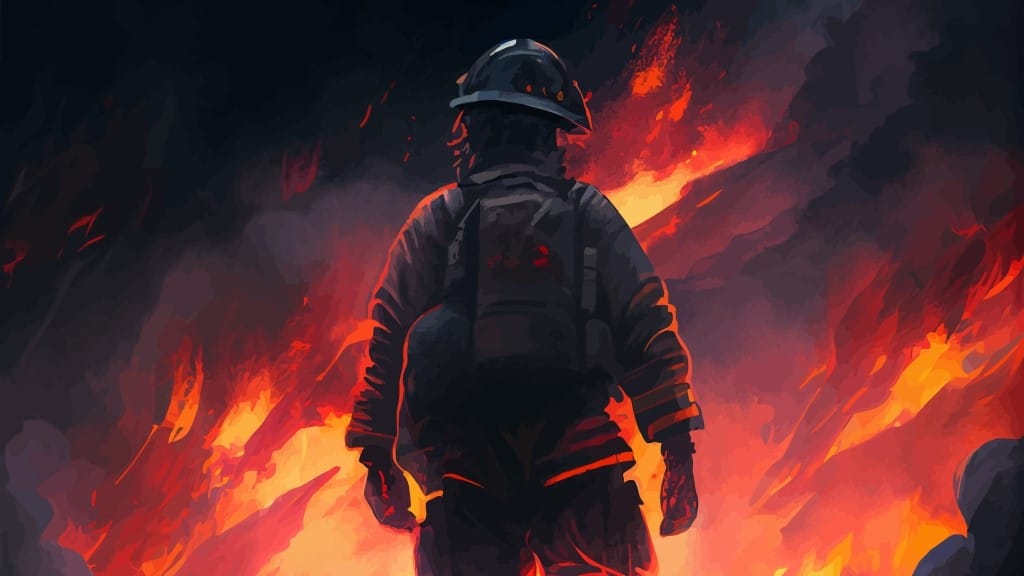Market Analysis: Firefighting Equipment
- January 22, 2024
- 10:31 am


Iain Hoey
Share this content
From gear to communication, IFSJ delves into the diverse market of firefighting equipment and the latest innovations
The market for firefighting equipment is diverse and encompasses various segments including firefighting tools, protective gear, breathing apparatus, handheld detection equipment, communication equipment, and rescue equipment.
Each of these segments plays a critical role in ensuring the safety and effectiveness of fire services across the globe.
Firefighting tools and rescue equipment
This segment encompasses essential items such as hoses, nozzles, cutters, axes, hydraulic rescue tools, ladders, and stretchers.
The demand in this market is propelled by the continuous need for more efficient, durable, and easy-to-handle tools and equipment.
Technological advancements have led to the development of tools and devices that are not only more effective in firefighting and rescue operations but also safer and easier to use under challenging conditions.
Additionally, the global increase in fire incidents, both in urban and wildland settings, has necessitated a steady demand for innovative firefighting tools and rescue equipment, with growth driven by factors like urbanisation and the increasing complexity of rescue operations.
Protective gear
Firefighter protective gear, including helmets, fire suits, gloves, boots, and other protective clothing, is indispensable for ensuring the safety of firefighters in their high-risk profession.
The global firefighter personal protective equipment (PPE) market, valued at US $1.81 billion in 2022, is projected to reach US $2.53 billion by 2029, with a 4.9% CAGR between 2023 and 2029.
This growth is driven by strict safety regulations, the escalating severity of wildfires, and the demand for specialised gear designed for challenging firefighting environments.
In parallel, breathing apparatus, especially self-contained breathing apparatus (SCBA), is vital when dealing with smoke or toxic gases.
The breathing apparatus market, worth US $2.15 billion in 2022, is expected to expand to US $3.02 billion by 2029, with a 5.1% CAGR.
This expansion is attributed to technological advancements, stringent safety standards, and the increasing complexity of fire-related challenges.
Detection and communication
Handheld detection equipment, encompassing gas detectors, thermal imaging cameras, and smoke detectors, plays a pivotal role in fire safety.
The global smoke detector market, valued at approximately US $1.9 billion in 2018, is projected to reach around US $3.4 billion by 2026, driven by technological advancements, elevated safety standards, and the increasing integration of smart technologies into safety equipment.
Reliable communication equipment is essential for the effectiveness of firefighting operations.
This market segment includes radios, intercom systems, and other communication devices, facilitating robust, clear, and secure communication channels during firefighting missions.
Ongoing technological progress contributes to the development of more sophisticated and dependable communication tools, ensuring seamless coordination and safety during critical operations.
Regional breakdown
In 2022, the global fire safety equipment market was valued at USD 49.82 billion, anticipated to grow at a CAGR of 6.4% from 2023 to 2030.
This growth is largely driven by advancements in wireless sensor networks, increased adoption of wireless fire-sensing devices, and growing awareness about combating fire hazards.
North America is dominating the market with a share exceeding 37.0% in 2022, North America’s growth is fuelled by stringent fire safety regulations and norms, rapid commercial and industrial construction development, and quick adoption of advanced technologies.
Asia Pacific is expected to register the highest CAGR of 9.2% over the forecast period, the Asia Pacific region’s growth is driven by rapid urbanisation and industrialisation in countries like India, China, and Japan.
The Middle East market is significantly influenced by its predominant oil and gas, and mining sectors.
High risks of fire accidents in these industries necessitate advanced fire detection and prevention equipment.
Strict adherence to building safety codes, coupled with rising automation due to smart homes and building projects, are key factors contributing to the growth of the fire safety equipment market in this region.
Developments and Outlook
Helmets: Modern firefighter helmets incorporate heat-resistant visors with integrated thermal imaging and heads-up displays, enhancing safety and situational awareness in smoke-filled environments.
Thermal imaging cameras: Recent innovations have led to smaller, portable, and more affordable thermal cameras that can be attached to helmets or integrated into handheld devices.
Firefighting suits: Advanced fabrics in PPE offer superior protection against heat and flames while remaining lightweight.
Integrated cooling systems help regulate body temperature during intense operations.
Robots: Increasingly deployed in hazardous situations, these robots are equipped with cameras and sensors for remote operation, minimising human exposure to danger.
Water Mist Technology: Emerging as an efficient and environmentally friendly alternative to traditional water hoses, this technology uses less water and is effective in confined spaces.
Drones: Equipped with thermal imaging, drones provide aerial perspectives to locate hotspots and guide firefighting efforts, especially in large-scale wildfires.
Exoskeletons: These wearable devices enhance a firefighter’s strength and endurance, reducing fatigue and injury risks during prolonged operations.
Communication Systems: Advanced radio systems with noise-cancelling features ensure clear communication even in chaotic environments.
The overall market for firefighting equipment is marked by a combination of factors such as technological advancements, stringent safety regulations, increased urbanisation, and the growing awareness of fire safety.
This is leading to a steady growth in demand across all segments, with a particular focus on innovation, efficiency, and safety.
As the challenges in firefighting evolve, so does the equipment, ensuring that firefighters are equipped with the best tools to tackle fires effectively and safely.



